Last month, Ben Phillips from ANU’s Centre for Social Research published a spurious analysis claiming that “lower migration wont ‘free up housing'”, because “as population increases dwelling numbers also increase”, and “with fewer migrants we’d also have fewer dwellings”.
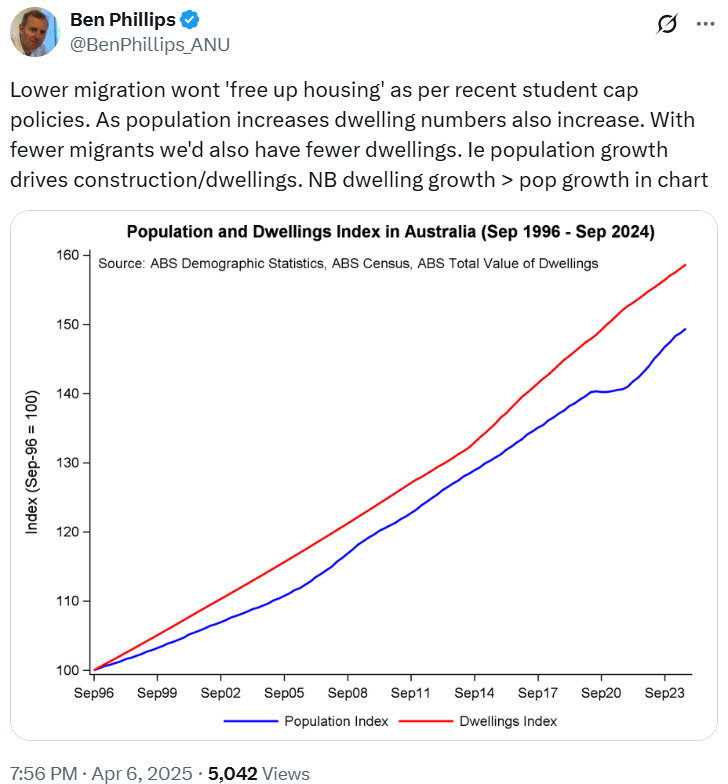
Phillips’ analysis was comprehensively demolished on the grounds that:
- Very few migrants work in construction. Therefore, migrants add far more to housing demand than supply.
- Australia’s population grew “slowly” between 1990 and 2004, but dwelling completions barely changed. Therefore, high rates of immigration do not mean high rates of dwelling construction.
Phillips has returned with another spurious report arguing that Australia’s rental crisis is “overblown”:
Ben Phillips, an associate professor at the Australian National University Centre for Social Research and Methods, says talk of a national rental crisis is “overblown”.
Phillips says much of the media attention has been focused on the rapid rise in advertised rents, which peaked at well over 15% in 2024, according to property research firm CoreLogic.
That’s the fastest annual rate on record, according to this data stretching back about two decades.
And since the end of 2019, this measure of rents has climbed by nearly 50%…
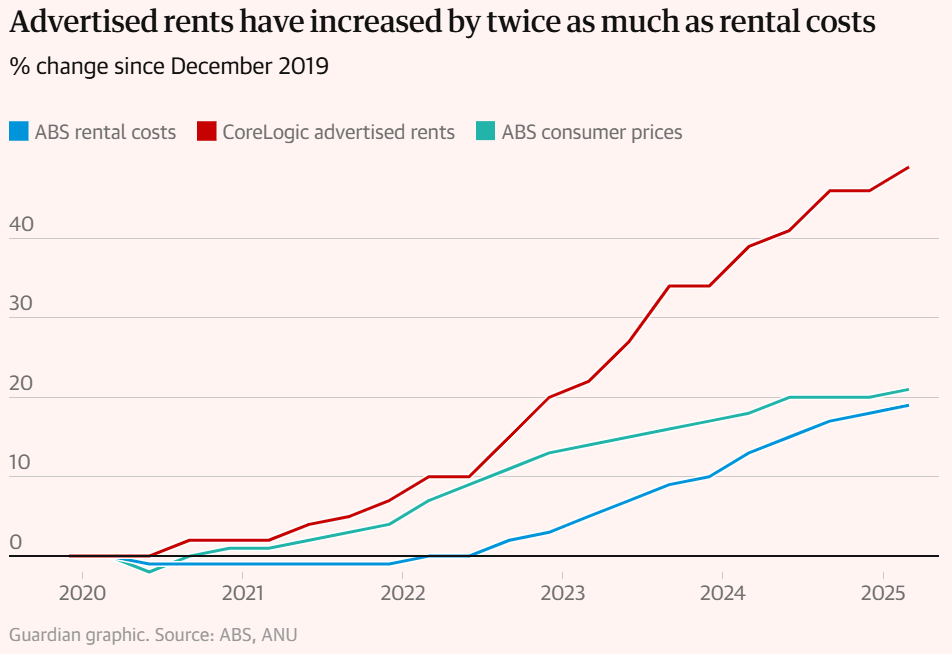
But Phillips, a member of the Albanese government’s economic inclusion advisory committee, which has advocated for a major lift in the jobseeker payment, says these online advertised rents are only a small and unrepresentative share of the total rental market.
They reflect how difficult and pricey it is to move rentals, or rent for the first time. What they don’t reflect is how much most of the roughly 3 million households with a lease are actually paying.
And there, the picture is very different.
The most comprehensive database on rents paid is produced by the Australian Bureau of Statistics as part of its consumer price index (or CPI, which measures inflation) series.
The ABS each month tracks rental rates for about 600,000 properties, or nearly one in three leased homes.
And by this measure, rents have climbed by 19% in just over five years – or less than half the CoreLogic reported rate.
That’s not nothing, but it is two percentage points less than the overall increase in the CPI over that same period. In other words, rents have been a drag on overall inflation.
Ben Phillips’ analysis of the rental crisis is flawed.
Using overall CPI rents to conclude that the rental crisis is “overblown” is like saying that high house prices are not a problem for affordability because most people already own a home and are, therefore, not impacted.
However, for those seeking to purchase or rent a home, affordability is the worst on record, according to CoreLogic, which came to its conclusion using the ANU’s own data:
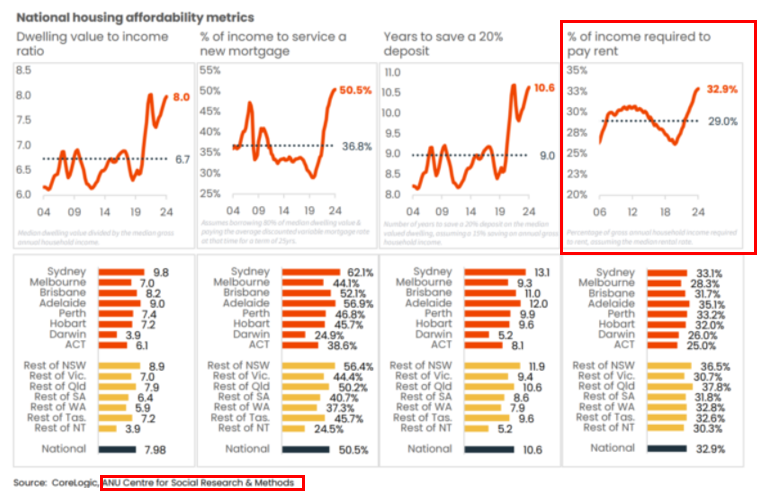
As shown in the top right panel above, the “percentage of gross annual household income required to rent, assuming the median rental rate” was a record 32.9% at the end of 2024.
PropTrack’s latest rental affordability report came to the same conclusion: for anybody seeking a rental, affordability is the worst on record:
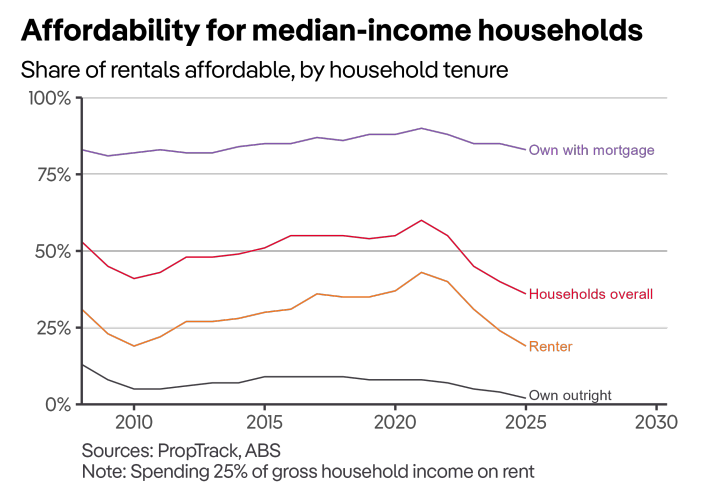
In a similar vein, the latest report from campaign group Everybody’s Home found that a single person needed a $130,000 income to comfortably afford the national weekly asking rent for a typical unit:
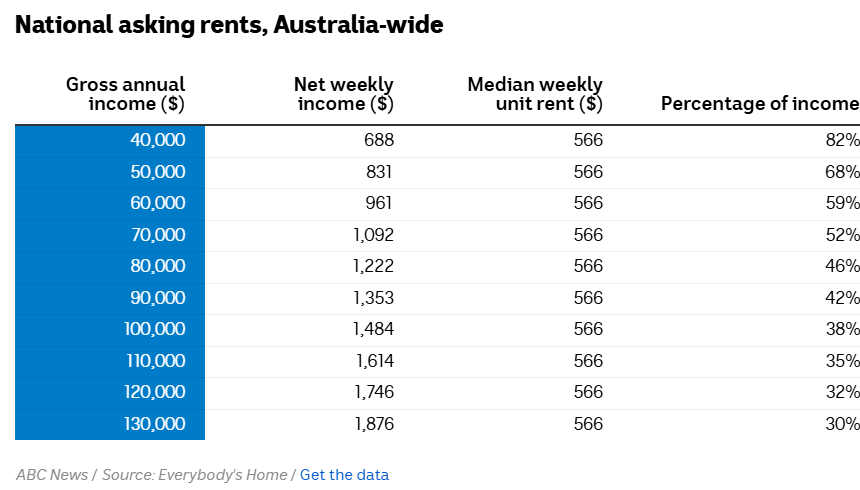
Finally, the Australian Homelessness Monitor 2024, released in December 2024 by the Australian Institute of Health and Welfare (AIHW), concluded with the following:
The balance of evidence presented in this report clearly indicates that homelessness has recently escalated significantly.
For lower income Australians in need of accommodation, private housing market conditions have become increasingly stressful since 2020.
Do the above reports paint a picture of a rental market that is not in crisis? No. Rental affordability stinks.
Not to mention the fact that the combined capital city rental vacancy rate is tracking near a historical low:
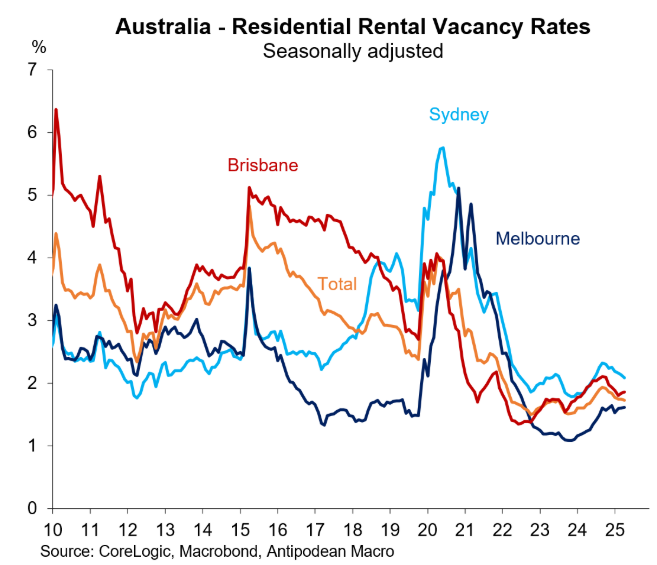
Enough said.

